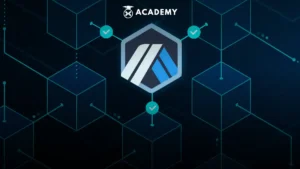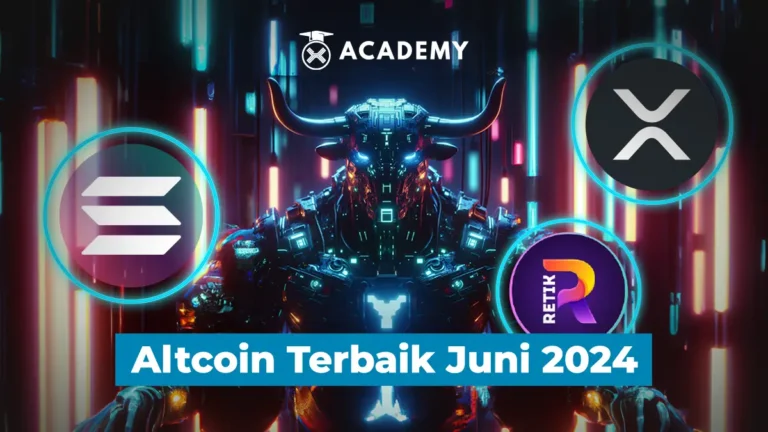In the blockchain ecosystem, Arbitrum is a layer 2 solution intended for Ethereum that aims to increase scalability and reduce transaction costs.
As the Arbitrum ecosystem grows, the demand for transaction monitoring platforms in this network also increases.
Arbiscan is a block explorer that provides real-time data about transactions, addresses, tokens, and various other information about Arbitrum. This platform has become very useful for individuals who want to keep up with the latest developments on the Arbitrum blockchain network.
Basically, Arbiscan is one of the most important tools in the crypto ecosystem, as it provides access to necessary data for users, investors, and developers. The goal is to be able to participate and operate more efficiently in the Arbitrum blockchain network.
So, to understand more about what Arbiscan is, its features, and how to use it, see the full review below.
What is Arbiscan?

Arbiscan is a blockchain that has been developed for the Arbitrum network. Its function is to closely monitor all transactions, blocks, and smart contracts operating on the Arbitrum network.
Arbitrum itself is a Layer 2 solution for Ethereum designed to reduce gas fees in the Ethereum chain and overcome the congestion problems that often arise on the main network.
As Ethereum faces scaling issues, Layer 2 solutions like Arbitrum seek to increase the number of transactions and reduce fees while maintaining the security and decentralization of the Ethereum network.
Arbitrum has transformed Ethereum transactions to be more efficient and economical. As with other blockchain explorers, Arbiscan plays a key role in maintaining auditability and openness in the Arbitrum blockchain ecosystem.
This means that all activities that occur within the Arbitrum network can be monitored regularly and carefully.
Among its advantages is its easy user interface. That’s because Arbiscan gives users a full view of transactions, contracts, and addresses within the Arbitrum network.
Users can access transaction data such as time, gas fees, and block confirmations by searching for a specific transaction or address.
In addition, Arbiscan’s ability to track and evaluate smart contracts implemented in the Arbitrum network is also one of its main features. Furthermore, Arbiscan also provides real-time network information such as the total number of transactions, average gas fees, and active addresses.
Furthermore, advanced graphing features are also available in this blockchain explorer and allow users to visualize network information and track historical patterns.
What are the Arbiscan features?
Getting to know Arbiscan’s features is important because it allows users to get the most out of the tool when interacting with the Arbitrum network.
The maximum benefit from Arbiscan can be for research purposes, personal account monitoring, market analysis, or other purposes within the Arbitrum blockchain ecosystem. The following are Arbiscan features that you need to know, including:
1. Monitoring transactions
One of the main features that can be utilized in Arbiscan is the ability to monitor transactions that occur in the Arbitrum network. Arbiscan users can easily search for transaction details by entering a specific address.
From the transaction page, users will find a variety of complete data, such as transaction hash, transaction type (sending and receiving tokens to transfer), block, date, sender and recipient, transaction amount, and gas fees.
All this data is presented in real-time and transparently, making it an effective tool for monitoring activity within the Arbitrum network. As of August 30, 2023, Arbiscan had recorded more than 348,944,439 transactions in its system.
2. Provide visualization of transaction data.
Arbiscan provides transaction data that can be monitored in visual form, including graphs and statistics. On this page, you can find blockchain data, which includes:
- Daily Transaction Graph: This graph displays the total number of daily transactions in the Arbitrum blockchain. This graph details the average difficulty level, estimated hash rate, average block size and time, number of blocks, number of transactions, and total new addresses visible.
The highest peak of transactions in the Arbitrum blockchain was recorded on March 23, 2023, reaching 2,733,872 transactions in one day. Meanwhile, the lowest figure was recorded on June 5, 2021, only recording 18 transactions in a day.
- Unique Addresses Graph: This graph shows the total number of different addresses present in Arbitrum and shows the daily increase in the number of addresses.
The highest record for the number of new addresses was recorded on August 25, 2023, reaching 201,931 new addresses in one day. In contrast, the lowest number of new addresses occurred on July 11, 2021, recording only one transaction per day.
- Daily Verified Contracts Graph: This graph shows the total number of contracts verified each day on the Arbitrum network.
With this visual data, users can easily observe and analyze the development of the Arbitrum blockchain, both in terms of daily transaction activity, address growth, and contract verification on the network.
3. Tracking Token Activity
Arbiscan’s additional features allow users to track activity related to tokens, non-fungible tokens (NFTs), and multi-tokens.
In ERC20 token tracking, market capitalization information, which includes token name, price, trading volume, market capitalization, and number of token holders, is available for viewing.
Additionally, for ERC20 token transfer activities, transaction data hash, date, sender, recipient, amount of assets sent, and names of tokens involved in the transaction can be accessed.
To track ERC-721 NFTs, users can view information such as the token name and the number of tokens that have been transferred within the last 24 hours and seven days. As of August 30, 2023, there were a total of 22,810,664 transactions recorded in NFT transfers.
With these features, Arbiscan provides complete visibility into the wide variety of digital assets and activities within the Arbitrum network, allowing users to better monitor and analyze the development of the assets and transactions they are interested in.
Benefits of Using Arbiscan
Arbiscan can be considered a helpful solution in Layer-2 monitoring which may be a bit more complex than its predecessors. By using Arbiscan, you can access various benefits, including:
- Arbiscan allows you to view various metrics related to the Arbitrum network, including gas fees and number of transactions. This information is invaluable in planning and managing transactions within the network.
- Arbiscan provides a high level of transparency, which helps users clearly verify activities within the network. Additionally, Arbiscan’s debugging capabilities help in troubleshooting technical issues and identifying potential causes of problems within smart contracts.
- With a User Interface similar to Etherscan, Arbiscan provides a familiar user experience for those who are used to Etherscan. This makes it easy to use and accessible.
How to use ArbiScan

In order to maximize the benefits of the Arbitrum network and the crypto ecosystem as a whole, it is important to understand and master how to use Arbiscan.
In this way, users can make better, safer, and more efficient decisions in various aspects of their activities on the network.
Here are the basic steps to get started with Arbiscan, namely:
1. Access the Arbiscan Website
First, visit the official Arbiscan website at https://arbiscan.io/.
2. Search for an address or transaction
On the Arbiscan main page, you will find a search box. Use this box to search for the Ethereum address or hash of the transaction you want to trace. Type in the address or hash and press “Search” or a similar button.
3. Data Exploration
After finding the desired address or transaction, you will be taken to a page containing related data. Here, you can explore various information, including transactions, smart contracts, and network statistics.
4. Use Arbiscan features
Take advantage of the various features provided by Arbiscan, such as charts, transaction history, smart contract information, and more. You can click on the available links and icons to get more details.
5. Analysis and Monitoring
Use the data provided by Arbiscan for market analysis, monitoring your account activity, or understanding projects on the network.
In optimizing the use of this platform, here are tips and tricks that you can use, namely:
- Use accurate searches: Make sure to use accurate addresses or hashes when searching. Typing errors or inaccuracies can produce irrelevant results.
- Monitor activity: If you have an account or address on the Arbitrum network, regularly monitor your activity and balance using Arbiscan to ensure security and accuracy.
- Graph and statistics exploration: Take advantage of the graphs and statistics provided by Arbiscan to understand trends and developments in the network.
- Charts can help you identify potential opportunities or risks.
- Use APIs: If you are a developer, consider using the APIs provided by Arbiscan to integrate this data into your application or service.
- Check smart contracts: If you are interested in projects running on the Arbitrum network, check the smart contract code and contract details to ensure their reliability and functionality.
- Explore transaction history: When you see a particular transaction, pay attention to the previous and subsequent transaction histories to get better context.
- Use filters: Arbiscan provides filter options that allow you to filter data according to your preferences. You can use this feature to narrow down your search results.
- Keep up with Arbiscan: Always keep an eye out for the latest updates and developments from Arbiscan, as the platform may introduce new features or improvements in newer versions.
Conclusion
In conclusion, Arbiscan is a blockchain that has been developed for the Arbitrum network. Its function is to closely monitor all transactions, blocks, and smart contracts operating on the Arbitrum network.
Arbitrum itself is a Layer 2 solution for Ethereum designed to reduce gas fees in the Ethereum chain and overcome the congestion problems that often arise on the main network.
As for ArbiScan’s important role in the world of crypto arbitration, one of them is providing a high level of transparency in the Arbitrum ecosystem. It allows users to verify and understand every activity that occurs on the network.
Meanwhile, for crypto traders and investors, ArbiScan is an important tool for monitoring price movements and activity on the Arbitrum network. It helps with better decision-making.
So, now you understand what Arbiscan is, its features, and how to use it.
Furthermore, you can also read other interesting articles about what arbitrum and metamask are only at INDODAX Academy.
As additional information, INDODAX Academy is a platform that is very suitable for those of you who want to deepen your knowledge about digital assets and blockchain technology in depth.









